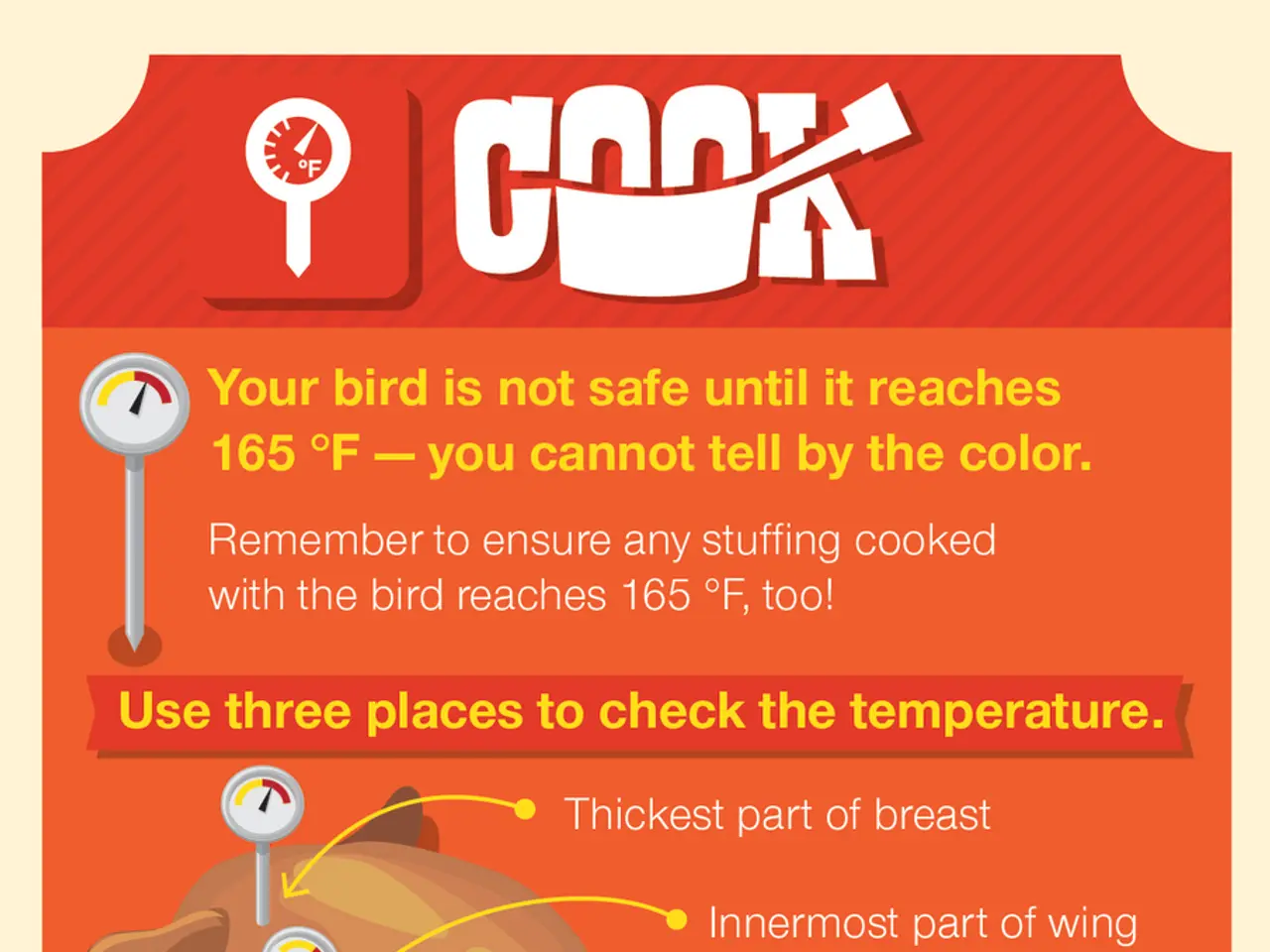Antibiotic-resistant urinary tract infections (UTIs) could potentially be caused by certain types of food.
Chicken, a common source of protein in many diets, has been linked to a surprising health concern: urinary tract infections (UTIs). Escherichia coli (E. coli), a type of bacteria found in chicken, can lead to UTIs when pathogenic strains, particularly those resistant to antibiotics like extended-spectrum beta-lactamases (ESBL), contaminate chicken meat and are subsequently transmitted to humans.
The process begins with contamination of chicken meat during production or processing, often from gut microbiota or environmental sources. If chicken is not properly cooked, these bacteria can survive and enter the human gut. E. coli from the gut can then ascend to the urinary tract, especially in women, causing UTIs. Some strains are particularly pathogenic and antibiotic-resistant, increasing infection risk.
The University of California, Berkeley and the U.S. Centers for Disease Control and Prevention have identified this link, with researchers noticing a connection between antibiotic-resistant UTIs and a certain strain of E.coli, which was related to the E.coli found in chicken. However, the exact mechanism is still under investigation.
To prevent these infections, proper handling and thorough cooking of chicken are essential. Cooking chicken to an internal temperature of at least 165°F (74°C) destroys harmful bacteria. Safe food handling practices, including washing hands and surfaces after contact with raw poultry and avoiding cross-contamination with other foods, minimize the risk of transmitting pathogenic E. coli.
Choosing chicken raised without antibiotics and organic chicken can also reduce the risk of antibiotic-resistant E.coli. Rinsing raw chicken is not recommended as it can spread bacteria. Raw chicken should be kept refrigerated, and hands should be washed before and after handling it.
Cooked chicken should have no pink meat left on the inside and clear juices. A food thermometer can be used to ensure the chicken's internal temperature is at least 165°F. Following these precautions can help ensure that chicken is safe and E.coli-free, making it a reliable source of lean protein.
While the link between E.coli in chicken and UTIs is concerning, it's important to note that the Mediterranean diet encourages people to get most of their protein from lean sources like chicken and fish. By following safe handling and cooking practices, chicken can remain a nutritious and healthy food choice.
- The medical-condition of urinary tract infections (UTIs) has been linked to the bacteria Escherichia coli (E. coli), which is found in chicken and can lead to UTIs when antibiotic-resistant strains contaminate chicken meat.
- Proper handling and thorough cooking of chicken are essential to prevent the transmission of pathogenic E. coli and the development of antibiotic-resistant UTIs.
- In the process of healthy-cooking, cooking chicken to an internal temperature of at least 165°F destroys harmful bacteria, minimizing the risk of UTIs caused by E. coli.
- Besides safe food handling and cooking practices, choosing chicken raised without antibiotics and organic chicken can also reduce the risk of antibiotic-resistant E.coli.
- Following a wellness lifestyle that includes nutrition, cooking, and food-and-drink choices such as the Mediterranean diet, which encourages lean protein sources like chicken and fish, can provide a balanced and healthy approach to one's health and wellness, fitness-and-exercise, and lifestyle.




